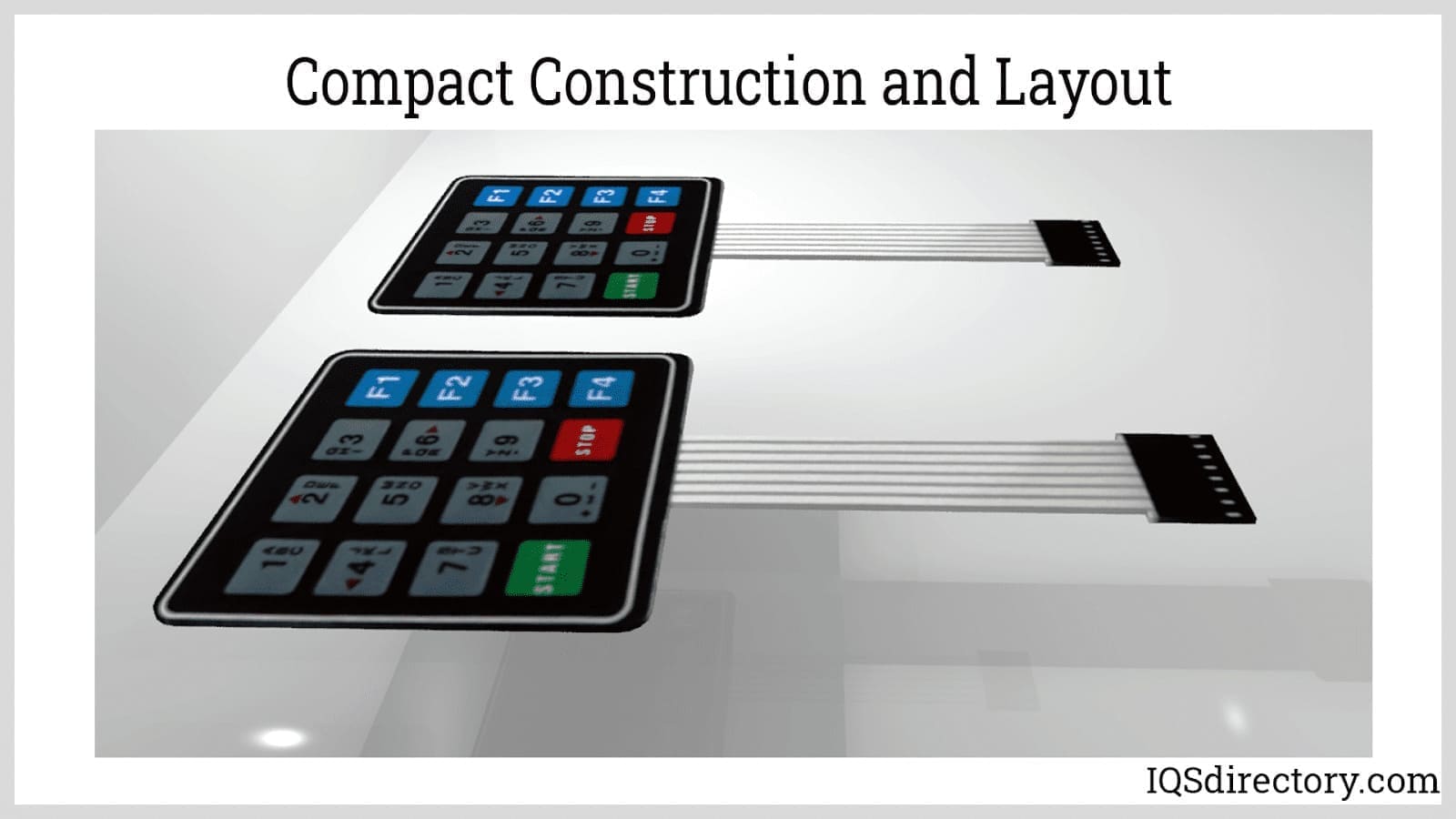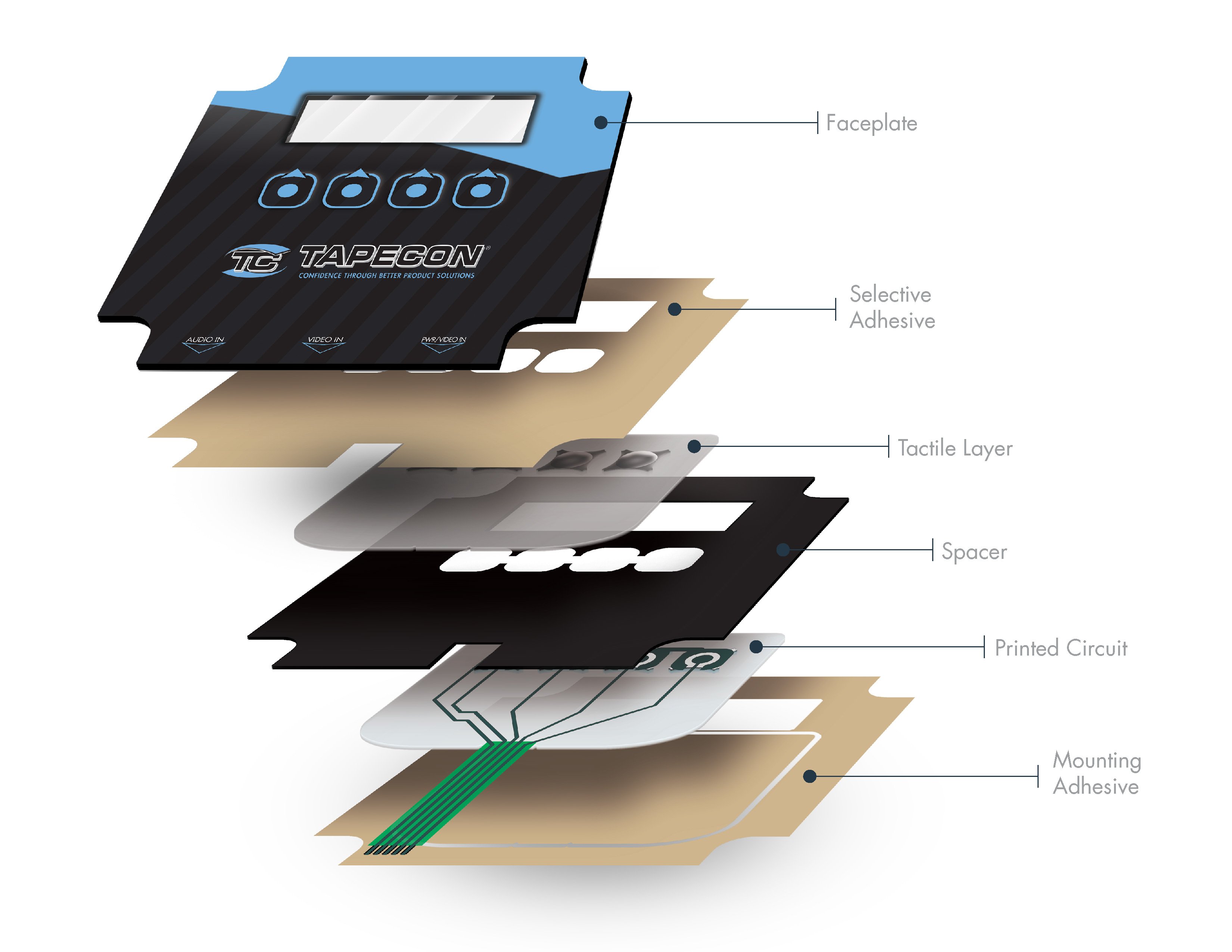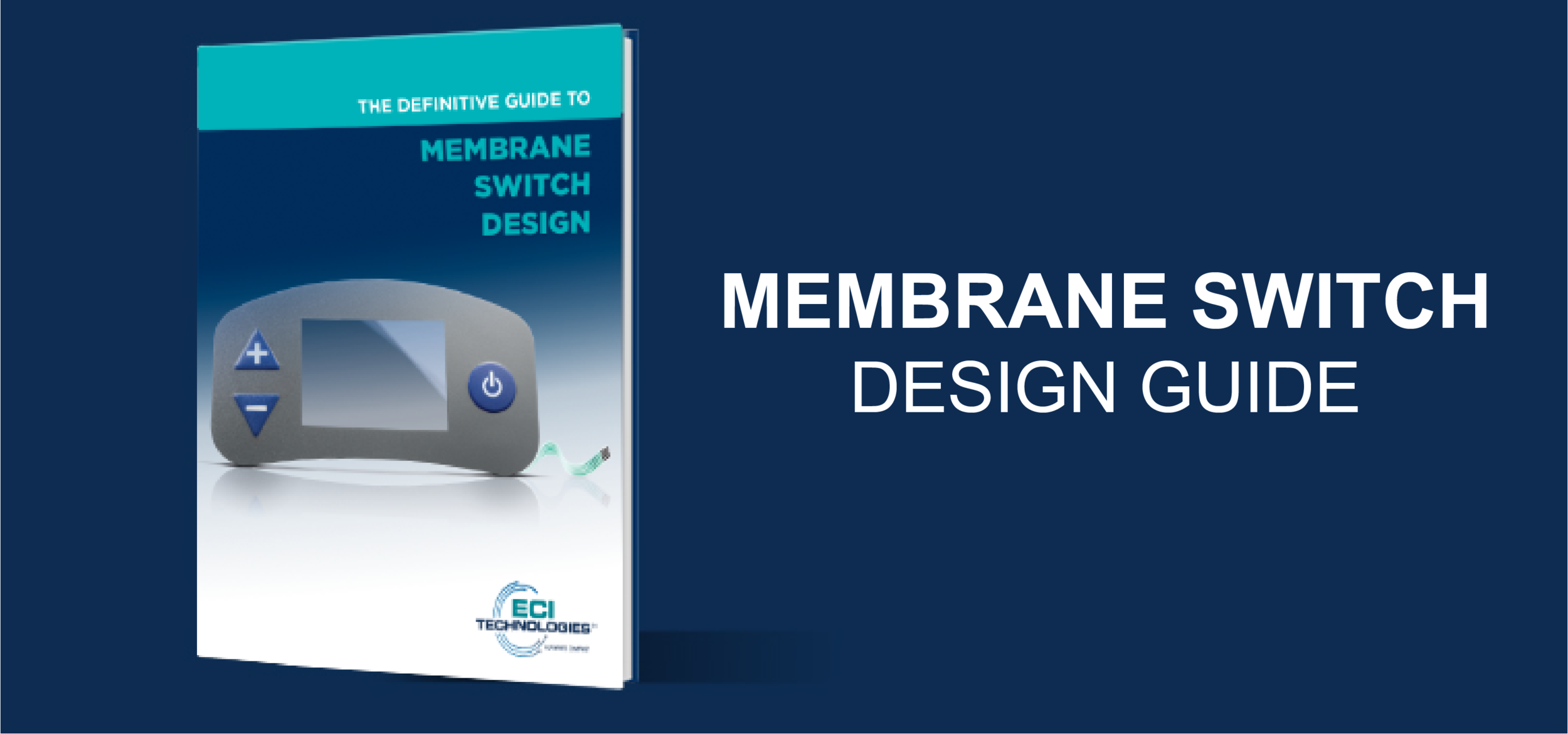Membrane Switches: A Cost-Effective Solution for Product Interfaces
Membrane Switches: A Cost-Effective Solution for Product Interfaces
Blog Article
Comprehending the Value of Membrane Switches in Interface
Membrane switches are essential components in the style of effective user interfaces, facilitating not only functionality yet likewise improving aesthetic appeal and individual communication. As we check out the future patterns and numerous benefits linked with Membrane technology, it becomes clear that these switches are more than simply components; they stand for a merging of advancement and functionality.
What Are Membrane Buttons?

The spacer layer, which contains glue properties, enables the separation of the circuit layer from the overlay, making certain that the switch continues to be in a non-activated state until pressed. When pressure is put on the overlay, it compresses the spacer layer, connecting the gap and finishing the circuit in the underlying layer. This layout not only minimizes the physical space required for typical mechanical buttons however also boosts the resilience of the gadget, as Membrane buttons are normally resistant to dirt, dampness, and various other environmental factors.
Commonly found in applications ranging from consumer electronics to medical tools, Membrane buttons are important to contemporary technology, supplying a reliable and easy to use user interface that aligns with contemporary layout demands.
Benefits of Membrane Buttons
While many switch technologies exist, Membrane Switches offer distinct advantages that make them specifically desirable in numerous applications. One of the main advantages of Membrane switches is their small layout, which permits for space-saving applications in gadgets where property is limited. Their slim profile not just boosts aesthetic allure but additionally assists in lightweight construction.
One more substantial benefit is their resistance to ecological elements. Membrane switches are normally sealed against dampness, dirt, and contaminants, making them optimal for use popular environments, such as medical devices and industrial equipment. This sturdiness extends the lifespan of the switch, decreasing maintenance costs and improving reliability.
In addition, Membrane buttons can be tailored to meet details layout demands, incorporating special graphics and colors that improve customer interaction. Their responsive comments alternatives can additionally be customized to offer a rewarding customer experience. Additionally, Membrane switches are economical, particularly in high-volume applications, as they can be created successfully.
Applications in Numerous Industries

In the consumer electronics market, Membrane buttons prevail in gadgets such as microwaves, cleaning machines, and remotes. Their tactile comments and aesthetic alternatives boost individual experience while providing a sleek, contemporary look. Furthermore, automobile manufacturers make Discover More use of my blog Membrane buttons in dashboard controls and infomercial systems, where space is limited, and customer engagement is vital.
Additionally, the industrial sector leverages Membrane switches in control panels for equipment and tools, enabling instinctive procedure in frequently severe environments. Their resistance to chemicals and wetness makes certain durability and reliability in these applications. In general, the versatility of Membrane Switches adds dramatically to their widespread use, making them crucial in numerous technical domain names.
Design Factors To Consider for Membrane Buttons

When making Membrane buttons, numerous crucial factors to consider must be considered to make sure optimal functionality and individual experience. Firstly, the selection of products is critical; picking sturdy, top quality substrates can enhance the switch's long life and resistance to ecological variables such as dampness and temperature level variations.
Second of all, the style of the visuals overlay need to focus on quality and ease of usage. Symbols and message should be readable, and the design must assist in instinctive communication (membrane switches). Additionally, responsive comments is important; incorporating a tactile dome or various other devices can boost the customer experience by supplying physical confirmation of activation
One more important factor is the button's electric efficiency. Designers have to make sure that the conductive traces are correctly created to lessen resistance and avoid signal disturbance. This includes evaluating the needed actuation pressure and making sure compatibility with the electronic elements they will user interface with.

Future Trends in Membrane Innovation
As technology continues to advancement, Membrane buttons are poised to evolve dramatically, driven by developments in materials and producing methods. One emerging fad is the consolidation of sophisticated materials, such as conductive inks and flexible substratums, which enhance longevity and reduce the total weight of Membrane buttons. These products not just enhance the responsive action but likewise allow for the design of switches that can endure harsher ecological conditions.
In addition, the assimilation of touch-sensitive modern technologies is changing traditional Membrane Switches right into even more interactive customer interfaces. Capacitive touch sensors embedded within Membrane button panels can give a much more responsive and intuitive customer experience, lining up with the expanding need for sleek, modern-day designs in consumer electronic devices.
In addition, developments in printing techniques, such as electronic and 3D printing, make it possible for quick prototyping and modification of Membrane buttons. This versatility allows producers to react faster to market demands and customer choices.
Last but not least, sustainability is coming to be a significant emphasis, with producers discovering green materials and procedures. As these fads unfold, the future of Membrane modern technology promises improved capability, aesthetic charm, and ecological responsibility, solidifying their function in innovative user interfaces across different sectors.
Conclusion
In verdict, Membrane Switches stand for a vital component in the design of interface, incorporating capability with visual flexibility. Their advantages, including longevity and resistance to ecological variables, make them suitable for varied applications throughout numerous sectors. In addition, thoughtful layout factors to consider improve individual interaction and experience. As developments in technology continue, the development of Membrane buttons is expected to further improve interface, driving innovation and boosting usability in a progressively complex technical landscape.
Membrane switches are indispensable elements in the design of reliable user interfaces, facilitating not only functionality but also improving visual allure and user interaction.Membrane Switches serve as a vital element in numerous user interfaces, assisting in a smooth communication in between users and digital devices.While countless switch innovations exist, Membrane Switches offer distinct advantages that make them specifically preferable in numerous applications.In addition, Membrane buttons can be personalized to satisfy details style needs, incorporating special graphics and shades that boost individual interaction.In conclusion, Membrane Switches stand for a crucial element in the layout of individual interfaces, combining capability with aesthetic adaptability.
Report this page